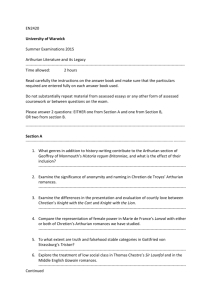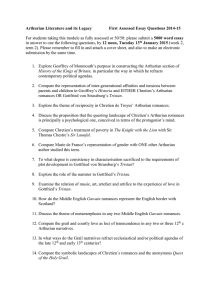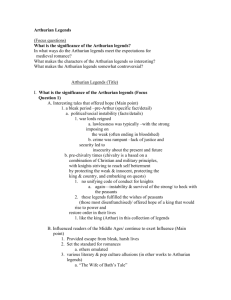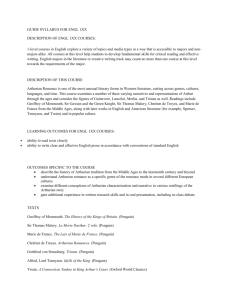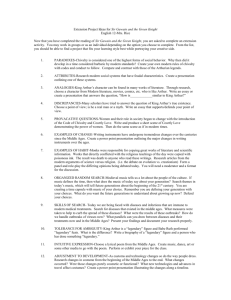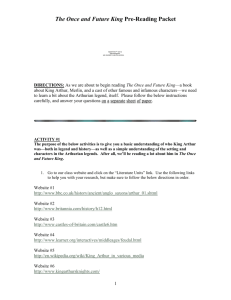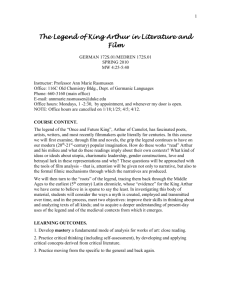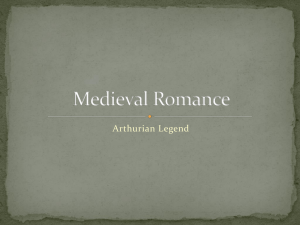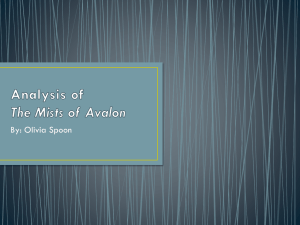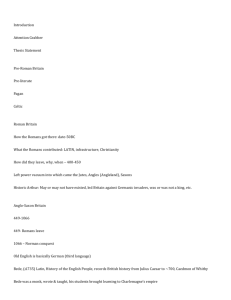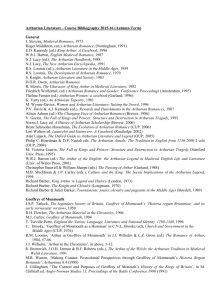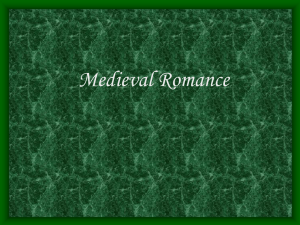ENG 218 Outline - Clackamas Community College
advertisement
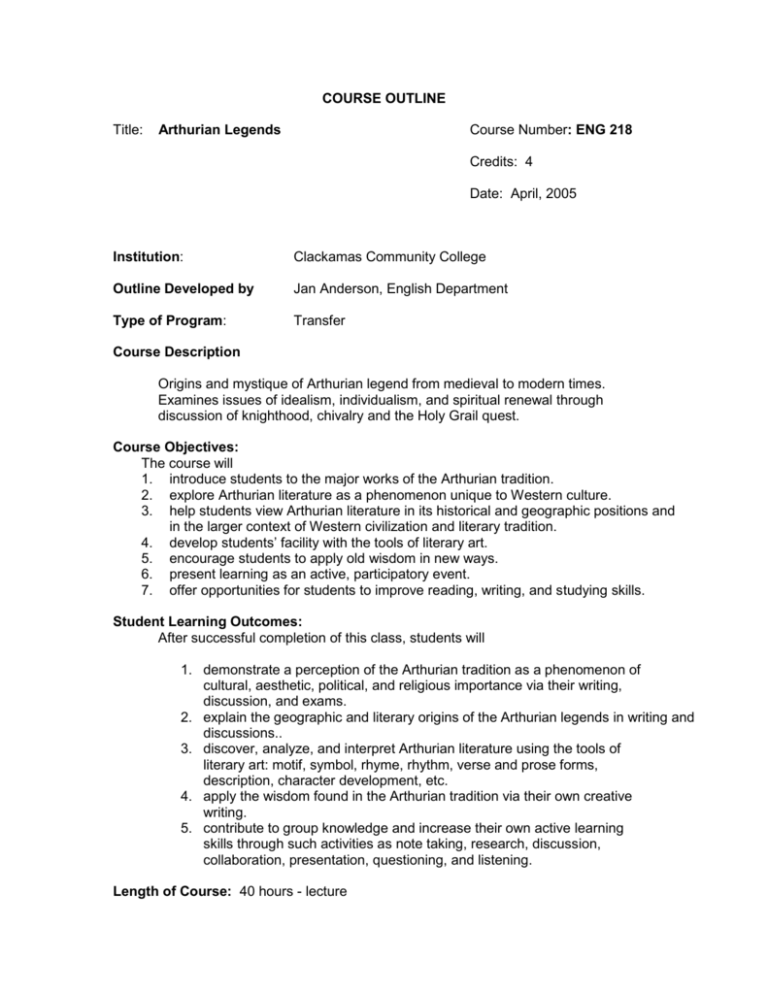
COURSE OUTLINE Title: Arthurian Legends Course Number: ENG 218 Credits: 4 Date: April, 2005 Institution: Clackamas Community College Outline Developed by Jan Anderson, English Department Type of Program: Transfer Course Description Origins and mystique of Arthurian legend from medieval to modern times. Examines issues of idealism, individualism, and spiritual renewal through discussion of knighthood, chivalry and the Holy Grail quest. Course Objectives: The course will 1. introduce students to the major works of the Arthurian tradition. 2. explore Arthurian literature as a phenomenon unique to Western culture. 3. help students view Arthurian literature in its historical and geographic positions and in the larger context of Western civilization and literary tradition. 4. develop students’ facility with the tools of literary art. 5. encourage students to apply old wisdom in new ways. 6. present learning as an active, participatory event. 7. offer opportunities for students to improve reading, writing, and studying skills. Student Learning Outcomes: After successful completion of this class, students will 1. demonstrate a perception of the Arthurian tradition as a phenomenon of cultural, aesthetic, political, and religious importance via their writing, discussion, and exams. 2. explain the geographic and literary origins of the Arthurian legends in writing and discussions.. 3. discover, analyze, and interpret Arthurian literature using the tools of literary art: motif, symbol, rhyme, rhythm, verse and prose forms, description, character development, etc. 4. apply the wisdom found in the Arthurian tradition via their own creative writing. 5. contribute to group knowledge and increase their own active learning skills through such activities as note taking, research, discussion, collaboration, presentation, questioning, and listening. Length of Course: 40 hours - lecture Grading Method: A-F Prerequisites: Placement in RD115 and Placement in WR121 Required Texts: Malory, Thomas. Works. Oxford: Oxford UP, 1971. Vinaver, Eugene. King Arthur and His Knights: Selected Tales. Oxford: Oxford UP 1977. White, T. H. The Once and Future King. New York: Ace, 1987. Wilhelm, James J., ed. The Romance of Arthur: An Anthology of MedievalTexts in Translation. New York: Garland, 1994. Major Topic Outline: I. The genres A. The romance B. Folktale, legend, and myth II. Origins of Arthurian legend A. Geographic and historic considerations B. Literary chronology: 1. Earliest written mentions of Arthur from Gildas, 6th century, to Geoffrey of Monmouth, 12th century 2. The first formal legends: Von Eschenbach and Chrétien de Troyes (12th century), The Mabinogian, 14th century. 3. Sir Thomas Malory’s Le Morte Darthur, 15th century. III. Major themes A. Knighthood and the Code of Chivalry in the 10th and 11th centuries B. The Code of Courtly Love: Andreas Capellanus, c. 12th century C. The knight as flawed—or perfect--hero: the archetype D. The heroic quest and Knights of the Table Round IV. The Holy Grail A. The multiplicity of tales: The Western phenomenon B. Justifying the paradox: Christ the Warrior V. Legacies A. The grail as changeable symbol B. Arthurian material as a pattern of idealism, individualism, and spiritual discovery in the Industrial Age, from Twain’s Connecticut Yankee in King Arthur’s Court (1889) to Tennyson’s Idylls of the King (1834-85), to the image of JFK as the new Arthur in the1960’s. C. Arthurian romance as the world’s largest body of literature.
